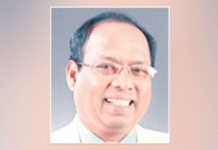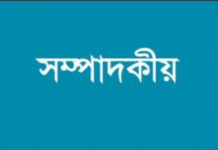
Sheikh Hasina, who resigned as prime minister of Bangladesh on Monday, was once a pro-democracy icon, known for fighting Islamic militancy and lifting millions out of poverty – but her two-decade rule came with a darker side as it tended towards crackdowns and repression to stifle dissent.
On Monday, amid violent protests that have left hundreds dead, the 76-year-old quit and fled the country. An interim government is now set to be formed.

The rise to power
Ms Hasina was born in East Bengal in 1947. She was the daughter of the charismatic Sheikh Mujibur Rahman, who led the country’s independence from Pakistan in 1971 and became known as the “Father of the Nation”.
But in 1975 Rahman and most of his young family were assassinated in a military coup, with only Ms Hasina, then 28, and her younger sister, surviving. The killings marked the beginning of a culture of political violence in the country.
After living in exile in India, Ms Hasina returned to Bangladesh in 1981 and became the leader of her father’s political party, the Awami League. She worked with other opposition groups to hold pro-democracy protests against the military rule of General Hussain Muhammed Ershad, and soon became a national icon.

A painting of Sheikh Mujibur Rahman, dubbed the ‘Father of the Nation’, at a damaged television studio in Dhaka after violent protests Credit: Rajib Dhar/AP
Ms Hasina was first elected to power in 1996, having endeared herself to voters with a water-sharing deal with India and a peace deal with tribal insurgents in the south-east of the country. But just five years later she lost her title to her former ally, Begum Khaleda Zia of the Bangladesh Nationalist Party (BNP), amid criticisms of alleged corrupt business deals and for being too subservient to India.
A bitter rivalry followed, which observers say has resulted in bus bombs, disappearances and extrajudicial killings. Ms Hasina herself endured numerous arrests while in opposition, along with several assassination attempts.
In 2009, she regained power, which she firmly held onto for 15 years, making her among the world’s longest-serving female heads of government.
Hasina’s rule and fall from power
The Muslim-majority nation of 170 million, once one of the world’s poorest countries, has become considerably richer under Ms Hasina’s leadership.
Aided by a booming garment industry, Bangladesh is now one of the fastest-growing economies in the region, even surpassing neighbouring India.
Its per capita income has tripled in the last decade and the World Bank estimates that more than 25 million people have been lifted out of poverty in the last 20 years.

The administration has also undertaken huge infrastructure projects, including the flagship $2.9 billion Padma bridge across the Ganges.
But since the pandemic, the South Asian country has struggled with an escalating cost of living and skyrocketing inflation, which critics have blamed on government mismanagement. They also say Bangladesh’s previous economic success only benefited those close to Ms Hasina.
Ms Hasina’s rule has also become tainted by allegations of repressive authoritarian measures against her political opponents, detractors and the media. Rights groups have expressed concern about hundreds of cases of alleged enforced disappearances and extrajudicial killings by security forces since 2009.
Ms Hasina, sometimes called “Asia’s iron lady”, denies the allegations.
In recent months many senior leaders of the main opposition group have been arrested, along with thousands of protestors, and in January, Ms Hasina won her unprecedented fourth term as prime minister, which was widely decried by critics as a sham.
In July students began peacefully protesting against quotas on government jobs for specific groups, which morphed into calls for her to resign. A bloody crackdown followed with Ms Hasina calling the protestors “terrorists”.
Bangladesh authorities responded to the protests by blocking internet access, restricting phone calls, and imposing a curfew. On Sunday, at least 90 people were killed, taking the total death toll to over 280. It’s some of the worst violence the country has ever seen.
On Monday Ms Hasina fled to India by helicopter as thousands of protesters stormed her official residence in the capital city Dhaka.
“She has fled the country, fled the country,” some shouted.
source : telegraph









